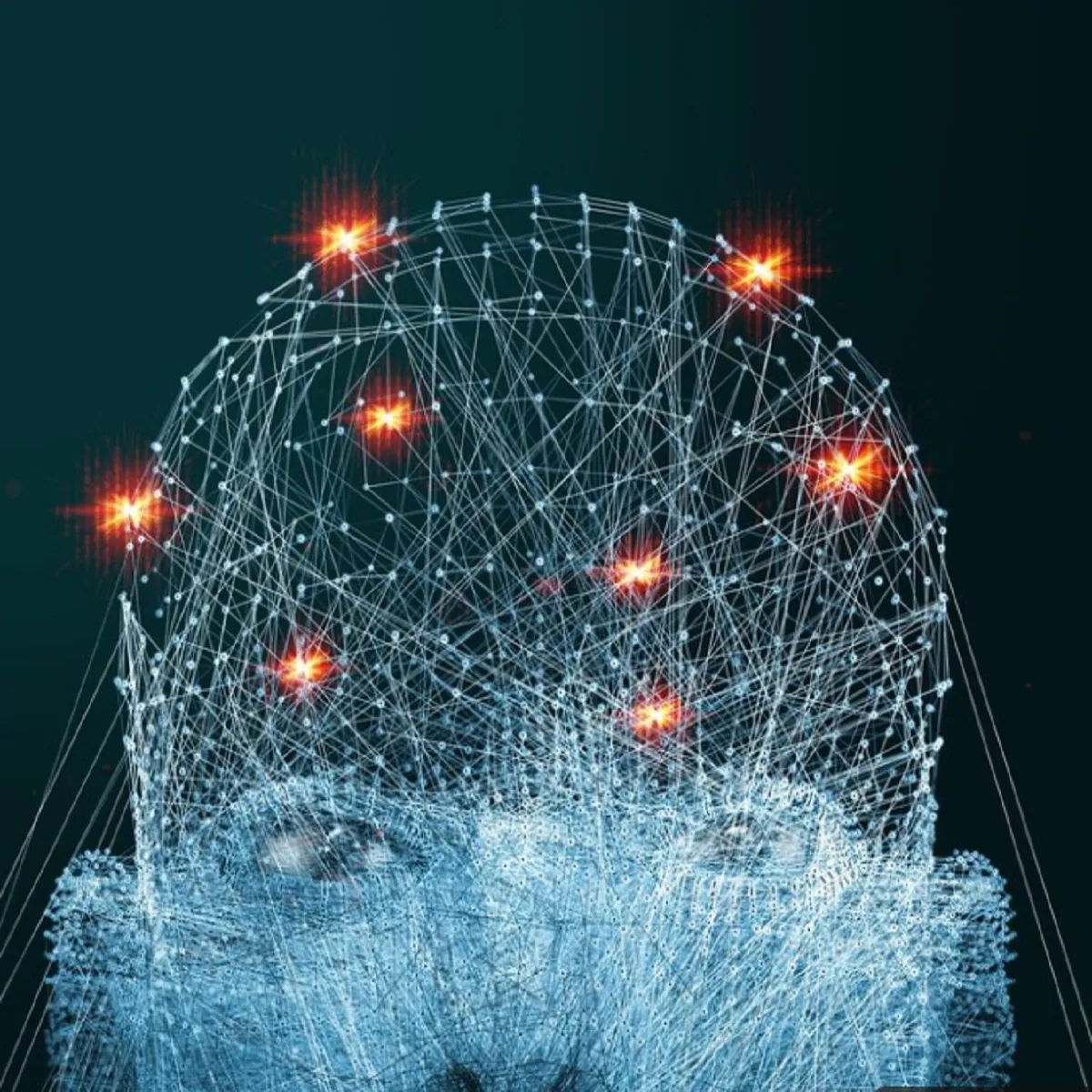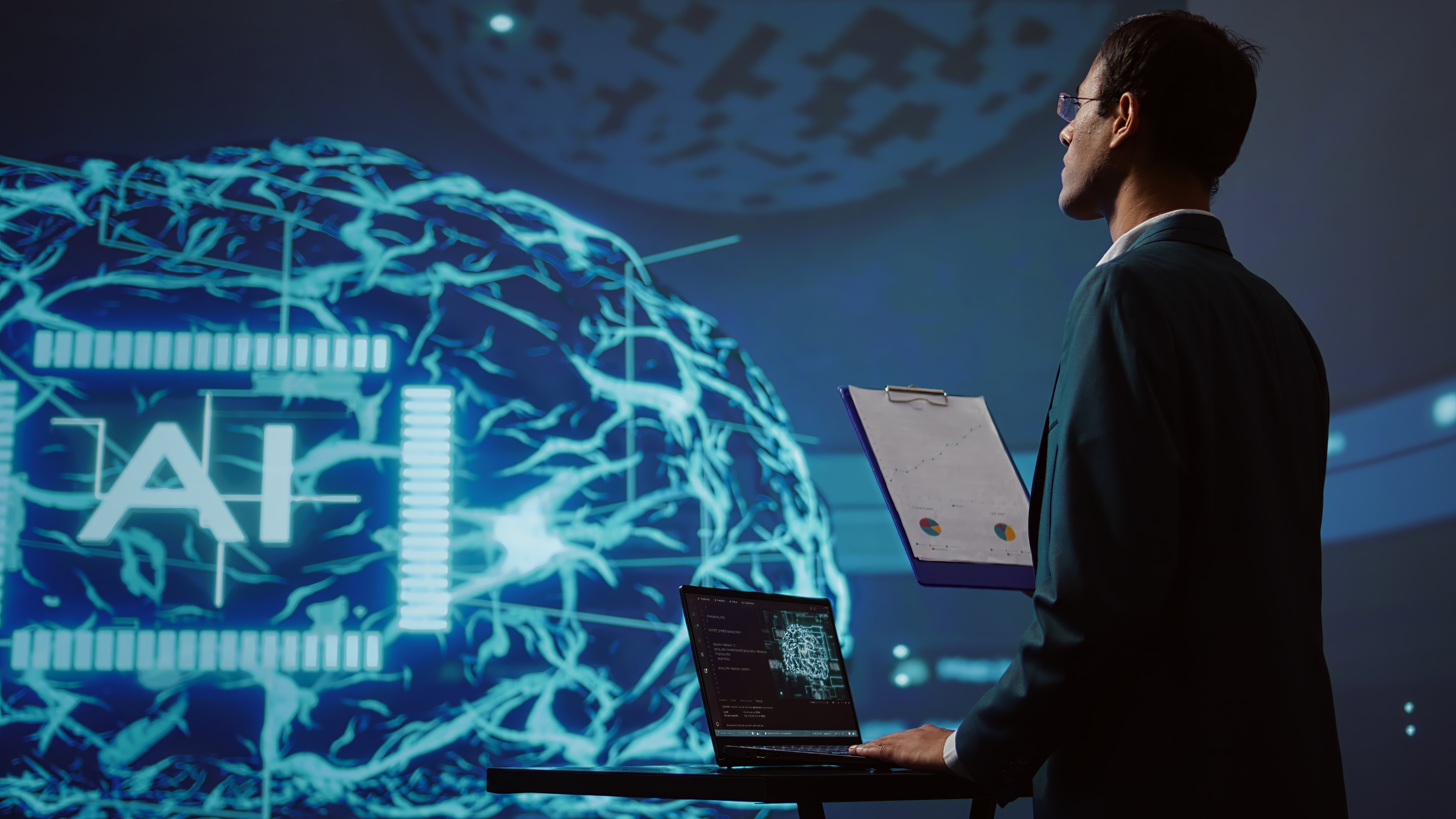Define Neural Network: A Complete Beginner’s Guide
What Does it Mean to Define a Neural Network?
Understanding what it means to define a neural network is the first step into the exciting and fast-growing world of Artificial Intelligence (AI). Neural networks are the building blocks behind many of the smart technologies we use today, from voice assistants like Siri and Alexa to tools that can recognise faces or translate languages in real time. But before you can fully grasp how these systems work, it's important to understand the basics—what a neural network actually is and why it's so important.
In this section, we’ll walk you through what this guide will cover, explain why neural networks are such a big deal in the world of AI, and highlight why learning about them is especially helpful for beginners. Whether you're aiming to build a career in AI or just want to understand how the technology works, starting with neural networks is a smart and practical first step.
What will this Guide Help you Learn?
This beginner’s guide is designed to give you a clear and simple explanation of what neural networks are, how they work, and why they are used in modern AI. You don’t need any prior technical background to follow along. Everything is explained step by step using real-world examples and beginner-friendly terms.
Why is Understanding Neural Networks Important?
Neural networks are one of the most powerful tools behind many AI applications—like voice assistants, image recognition, language translation, and recommendation systems. Knowing how they function helps you understand how machines learn, think, and make decisions.
Why is this Perfect for Beginners?
If you're new to AI, this guide is built just for you. We’ll explain each concept using simple language and easy examples. Whether you're a student, a professional exploring a new career path, or just curious, this guide will give you a solid starting point to explore neural networks and AI as a whole.
What is a Neural Network?
A neural network is a type of computer system designed to learn, process information, and make decisions in a way that mimics how the human brain works. In our brains, we have billions of tiny cells called neurons that communicate with each other by passing electrical signals. This is how we think, learn, and respond to the world around us. Similarly, a neural network is made up of layers of artificial “neurons” (also called nodes) that are connected and work together to process information.
A Simple Definition
At its core, a neural network is a model that helps computers recognises patterns. It learns by looking at large amounts of data, identifying relationships, and making predictions based on what it has seen before. For example, if you give it hundreds of pictures of cats and dogs, it can learn to tell the difference between the two by analysing patterns in the images.
Think of it like the Human Brain
An easy way to understand a neural network is to think of it as a simplified version of the brain. In the brain, neurons are connected and pass signals to each other. Similarly, in a neural network, artificial neurons (also called nodes) are connected in layers. Each node takes in information, does a little calculation, and passes the result to the next layer—helping the network make smarter decisions with each step.
Real-Life Uses of Neural Networks
Neural networks are used all around us. The power facial recognition on your phone, help voice assistants understands speech, suggest movies and music you might like, and even help doctors detect diseases in medical images. These systems are becoming essential in many industries—from finance to healthcare to entertainment.
Why are Neural Networks Important in Artificial Intelligence?
Neural networks play a central role in the development and success of modern Artificial Intelligence (AI). They are the driving force behind many of the smart technologies we use in everyday life—often without even realising it. From voice assistants and language translation tools to facial recognition and recommendation systems, neural networks are working behind the scenes to make these technologies possible.
Helping Machines Learn from Data
At the heart of AI is the ability for machines to learn from data—and this is where neural networks truly shine. Traditional computer programs follow fixed instructions. Neural networks, however, are flexible and learn on their own by spotting patterns in large sets of data. For example, instead of programming a computer to recognise a cat using set rules.
A Key Part of Deep Learning
When we talk about powerful AI models that can understand language, recognise speech, or drive cars, we’re often talking about deep learning—an advanced area of AI. Deep learning uses complex neural networks with many layers, which is why they’re also called deep neural networks. These layers allow the system to handle very detailed and high-level tasks, like translating languages or detecting objects in videos.
Real-World Applications Everywhere
Neural networks are already shaping our everyday lives. The power spam filters in your email, recommendation systems on Netflix and YouTube, voice recognition in smartphones, and even tools that help doctors find signs of disease in medical scans. In short, to define a neural network is to understand the core of many intelligent systems around us.
How Does a Neural Network Work?
Understanding how a neural network works might seem complicated at first, especially if you're new to the world of AI. But don’t worry—once you break it down step by step, it becomes much easier to grasp. At a basic level, a neural network is a system that takes in data, processes that data through multiple layers, and then makes a decision or prediction based on what it has learned.
Layers of a Neural Network
A typical neural network is made up of three main types of layers:
- Input Layer: This is where the data enters the network. Each node in this layer represents one feature of the data. For example, in an image of a face, each pixel might be a feature.
- Hidden Layers: These are the layers between input and output. This is where most of the “thinking” happens. The network adjusts and learns here by finding patterns and relationships in the data.
- Output Layer: This is the final layer that produces the result—such as identifying whether an image is of a cat or a dog.
Neurons and Connections
Each layer is made up of artificial neurons (also called nodes). These neurons are connected to the ones in the next layer. Each connection has a weight that decides how important the input is. The network adjusts these weights during training to improve accuracy.
Activation Functions
Activation functions decide whether a neuron should be “activated” or not. They help the network learn complex things by adding non-linearity—basically allowing the system to understand and solve more complicated problems.
What are the Types of Neural Networks you Should Know?
There are several types of neural networks, and each one is designed to handle specific tasks or types of data. While all neural networks share the same basic structure of layers and neurons, the way they process information and learn differs depending on the task at hand. Let’s explore three of the most common types you should know: the Feedforward Neural Network (FNN), the Convolutional Neural Network (CNN), and the Recurrent Neural Network (RNN).
Feed forward Neural Network (FNN)
The Feed forward Neural Network is the simplest type of neural network. It’s made up of layers where data flows in one direction—from the input layer, through the hidden layers, and finally to the output layer. This type of network is often used for basic classification tasks, like recognising whether an image contains a cat or a dog.
Convolutional Neural Network (CNN)
Convolutional Neural Networks are designed specifically for processing images. Unlike FNNs, which treat all input data as a flat list of numbers, CNNs look at data in small chunks, called filters, to detect patterns like edges, shapes, or textures. This makes CNNs ideal for tasks like image and video recognition, where the goal is to identify objects or faces within visual content.
Recurrent Neural Network (RNN)
Recurrent Neural Networks are unique because they have loops that allow information to be passed from one step to the next, making them perfect for tasks involving sequences, such as speech or text. RNNs can remember previous data and use it to inform future predictions.
How Does a Neural Network Learn During Training?
Training a neural network is a crucial process where the network becomes better at making predictions or decisions by learning from data. Initially, the network may make random or incorrect guesses, but as it is exposed to more examples, it gradually improves. During training, the network adjusts its internal settings—specifically, the weights and biases of the neurons—based on the data it receives, all with the goal of minimizing errors in its predictions.
What Training Means in AI
In AI, training refers to the process where a neural network is exposed to large amounts of data, and it uses that data to learn patterns or relationships. For example, if we want a neural network to recognise cats in images, we train it by showing it thousands of images, some of which are labelled "cat" and others labelled “not cat.”
Role of Data, Weights, and Bias
The data fed into the network is what the network learns from. Each piece of data, such as an image, has different features (like pixel values in an image of a cat) that help the network make decisions. The weights and biases are parameters in the network that determine how important each piece of data is.
Back propagation and Optimisation
Backpropagation is a key concept in training. It’s the method by which the network learns from its mistakes. After making a prediction, the network compares the result to the actual answer. If the prediction is wrong, backpropagation sends the error back through the network, adjusting the weights and biases to reduce the error in the future.
What is the Meaning of a Neural Network in Everyday Life?
Neural networks are not just theoretical concepts confined to research labs—they are the backbone of many technologies that you use on a daily basis. These networks power a wide range of smart tools that help simplify tasks and improve your experience with technology. Whether you're asking your phone to play music, receiving recommendations for your next movie.
Examples of AI-Powered Tools Using Neural Networks
Neural networks are behind many everyday AI-powered tools. For example, voice assistants like Siri, Alexa, and Google Assistant rely on neural networks to understand your speech and respond appropriately. These networks process your voice data, identify words, and interpret your intent to give you an accurate response.
How Neural Networks Are Impacting Daily Experiences
Neural networks are making a significant impact on how we experience technology in our daily lives. They allow machines to learn from data and improve over time, leading to more accurate results. For example, voice assistants become better at understanding you as you interact with them, and recommendation systems keep improving their suggestions the more you use them.
What are the Common Terms to Know When Defining a Neural Network?
When you define a neural network, it’s essential to grasp a few key terms that are foundational to how these networks function. These terms help explain the building blocks of a neural network and the processes it goes through to learn from data. Without understanding these concepts, it’s difficult to fully appreciate how neural networks make decisions, recognize patterns, or improve over time. In this section, we’ll break down some of the most common terms you’ll encounter as you dive deeper into the world of AI and neural networks, making sure each one is clear and easy to understand.
Neuron
A neuron is the basic building block of a neural network. It’s similar to a neuron in the human brain, receiving input, processing it, and passing the result on to the next layer. Each neuron performs simple calculations and uses these results to help the network make decisions or predictions.
Layer
A layer refers to a group of neurons stacked together. A neural network typically has multiple layers: the input layer (where data enters), hidden layers (where most processing happens), and the output layer (where the final result is produced). Each layer takes in the output from the previous layer and passes it to the next layer.
Weight
Weights are parameters that control how much influence a neuron’s input has on its output. During training, the network adjusts these weights to minimize errors in its predictions. The higher the weight, the more influence that particular input has on the result.
How to Learn More about Neural Networks?
If you're eager to understand how to define a neural network and explore the broader world of Artificial Intelligence (AI), there are countless resources at your fingertips to guide you. Whether you're just beginning your learning journey or already have some foundational knowledge and want to gain practical experience, the path to mastering neural networks is filled with opportunities. The world of AI can seem overwhelming at first, but with the right resources and guidance, you can break it down into manageable steps. From online courses and tools to hands-on projects, there are various ways to grow your skills.
Basic Tools and Platforms for Beginners
For beginners, the first step is getting familiar with the basic tools and platforms used in neural network development. Tools like Google Colab and Jupyter Notebooks provide free access to Python environments, allowing you to experiment with small neural networks without needing your own high-powered hardware.
Free/Paid Courses (Including LAI’s Own)
To deepen your understanding, there are various free and paid courses available online that cover neural networks in detail. Many platforms, such as Coursera, edX, and Udemy, offer beginner-friendly courses that explain the fundamentals of neural networks and AI. Some of these courses are taught by top universities and AI experts, providing a solid foundation for learners at all levels.
Next Steps for Learners Who Want Hands-On Practice
Once you understand the theory behind neural networks, it's important to get practical experience. Working on real-world projects and experimenting with datasets will help reinforce what you’ve learned. You can try building small projects like a handwritten digit recognizer using a Convolutional Neural Network (CNN) or a simple sentiment analysis tool using a Recurrent Neural Network (RNN).
Conclusion
To wrap up, we’ve explored what it means to define a neural network and how these networks play a critical role in AI. From understanding basic components like neurons, layers, and activation functions to seeing their real-world applications in tools like voice assistants and recommendation systems, we've covered the foundational knowledge. As you continue exploring AI, remember that learning is a journey, and hands-on practice is key. Don’t be discouraged by the complexity—every step forward builds your expertise. Keep experimenting, learning, and exploring the exciting world of AI. Your adventure into neural networks is just beginning!









